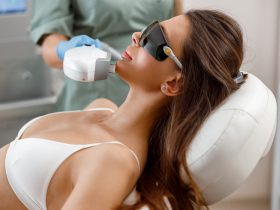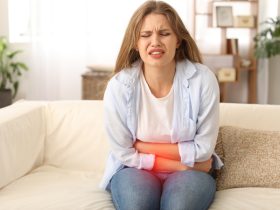Women’s testosterone levels naturally vary during life, menstrual cycles, and different parts of the day. When testosterone levels are low, it can impact the creation of new blood cells, sex drive, and other hormone levels.
Testosterone is part of a group of hormones called androgens. These levels influence:
- Fertility
- Sex drive
- Production of red blood cells
- Muscle mass and how fat is distributed
People often associate testosterone with males, but everyone needs a certain amount. While males have more testosterone, even females have small amounts produced by adrenal glands and ovaries.
The University of Rochester Medical Center states that a female should have between 15 to 70 nanograms per deciliter (ng/dl) of testosterone in her blood. Currently, there are no defined standards for determining “low” testosterone levels in females.
Symptoms of Low Testosterone in Women
Low testosterone levels in females can lead to various symptoms, including:
- Feeling sluggish
- Muscle weakness
- Fatigue
- Troubles with sleep
- Reduced interest in sex
- Decreased sexual satisfaction
- Weight gain
- Fertility challenges
- Irregular menstrual cycles
- Dryness in the vaginal area
- Loss of bone density
As the symptoms linked to low testosterone are quite common, doctors will search for signs of other conditions before confirming a diagnosis. They might examine for:
- Depression
- Anxiety
- Chronic stress
- Thyroid issues
- The transition to menopause
Causes of Low Testosterone in Women
There are two main reasons for low testosterone levels:
- Decrease due to natural processes of menopause and aging.
Issues with the ovaries, pituitary gland, or adrenal glands.
- As women grow older, their testosterone levels naturally decline. Hormones like estrogen also decrease, especially when menopause occurs.
During the menopausal phase, a woman might experience lower testosterone levels because her ovaries are producing fewer hormones. Additionally, medications used to manage menopause symptoms can lead to reduced testosterone levels. For instance, oral estrogen is one such medication.
Problems with the ovaries and adrenal glands can also contribute to low testosterone levels. If a woman has had her ovaries removed or has adrenal insufficiency (a condition where the adrenal glands don’t function properly), her testosterone levels may be decreased.
Diagnosis
Research on treating low testosterone in women is limited. Most doctors are more concerned about high testosterone levels.
A task force in 2014 recommended against routinely checking testosterone levels in women since there’s no established link between these levels and symptoms. When a woman reports the symptoms mentioned earlier, a doctor will first look for more common conditions. To diagnose low testosterone in women, a doctor will begin with a physical exam and inquire about symptoms. If low testosterone is suspected, a blood test will be ordered.
If a woman hasn’t gone through menopause yet, the doctor will likely suggest the best time to test testosterone levels due to their variations across the menstrual cycle.
Treatment
Some estrogen replacement medications contain testosterone.
However, the amount of testosterone in these medications might not be sufficient to raise levels, or the body may not absorb them well. Doctors may give testosterone injections or pellets, aiming for similar effects as in males: boosting energy, reducing fatigue, and increasing sex drive.
But many doctors caution against women taking testosterone. The FDA has also approved only a few testosterone-based treatments for women. This is because side effects can include:
- hair loss
- acne
- excessive facial hair
- deepened voice
- enlarged clitoris
The 2014 task force advised against treating low testosterone in women due to insufficient research. However, they made an exception for women with hypoactive sexual desire disorder, suggesting they receive treatment. Instead, doctors might recommend alternative therapies for managing low testosterone symptoms in women. These approaches and lifestyle changes may involve:
- sex therapy
- stress management
- adequate sleep
- healthy diet
- over-the-counter dehydroepiandrosterone (DHEA) supplements
DHEA is a steroid hormone produced by the adrenal glands. Supplements can be bought online. Yet, the Endocrine Society cautions against regular DHEA supplementation, as its long-term safety and effectiveness are yet to be proven.
DHEA supplementation’s side effects can resemble those of excessive testosterone.
Key Points to Remember
The effects of low testosterone levels on females and the optimal treatment approach are not completely understood by doctors and researchers. Testosterone levels naturally change with age and may decrease as menopause approaches. If a woman shows signs of low testosterone, a blood test can aid doctors in diagnosing the condition. It’s crucial to never undergo testosterone replacement therapy without a doctor’s guidance. Supplements and replacement treatments could lead to more side effects than relief.
















Find Us on Socials